Martin Mars
When in the thirties the first ‘Clipper’ flying boats were introduced for trans-ocean passenger transport, this seemed the final solution. Independent from expensive airport main structures the flying boat could use the water surface of the sea or river for take off and landing. Soon all big U.S. aircraft manufacturers started with the design of even larger flying boats with a capacity of at least a 100 passengers. Less was also an option, but that meant the sheer luxury of sleeping facilities and recreation rooms on board! Also Martin drew up a design for such a huge trans-ocean flying boat. Of course this project also aroused interest from military side and already in 1935 Martin was working on a very long-range multi-engine patrol bomber version to succeed their smaller twin engine flying boat then under development as the Martin Mariner. Finally, the large civil flying boat was never built and its military counterpart was built in limited numbers only……
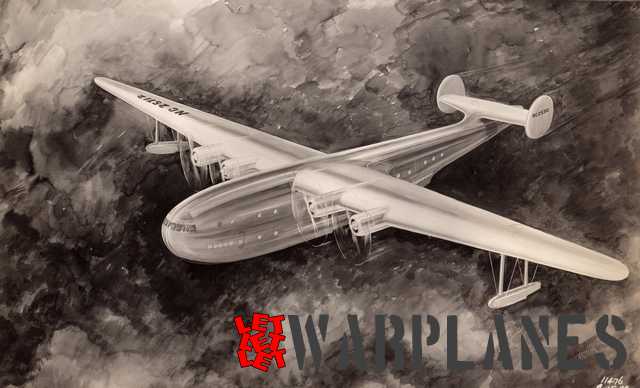
Early development and testing
Under the type designation PB2M-1 Martin received in August 1938 a final contract for the construction of an XPB2M-1 prototype. It received the name ‘Mars’ and would cruise at 365 km/h with a range of 8000 km and an all-up weight of more than 65,000 kg powered by four of the new Wright R-3350 Duplex Cyclone radial engine producing 2000 hp each. Construction was started in August 1940 and it was rolled out on 27 September 1941. Assigned Bureau of Aeronautics registration number was 1520. It was transported to the seaplane ramp at the Martin Middle River plant. On 5 November 1941 it was launched into the water and further readied for its first engine runs. One month later, fire broke out in the right inner engine when the reverse pitch mechanism failed. A propeller blade broke off and buried itself into the fuselage, just missing a flight engineer. The flying boat was beached for easier extinguishing of the fire, but eventually the burning engine fell from the fuselage and the fire was soon put out. Everything was repaired and after the fitting of a new engine, the XPB2M-1 was ready for testing again in early January 1942. When the prototype was ready for its first flight, Martin decided to replace the 2000 hp Duplex Cyclones by the latest and more powerful R-3380-18 giving 2200 hp. Also the 3-bladed propellers were changed for the most modern version then available; the all-metal Hamilton Standard. It replaced the earlier wooden propellers. This caused a delay of almost half a year, but the first flight was finally made on 3 July 1942. During this flight test period no military equipment was fitted, although it had three gun stations planned for in total six .50 machine guns. One turret was fitted in the nose, another one on the upper fuselage just behind the wings and a last was positioned in the fuselage tail. Testing was continued with several loads and by October 1942 the prototype had covered a distance of 7400 km in 32 flight hours without much problems.
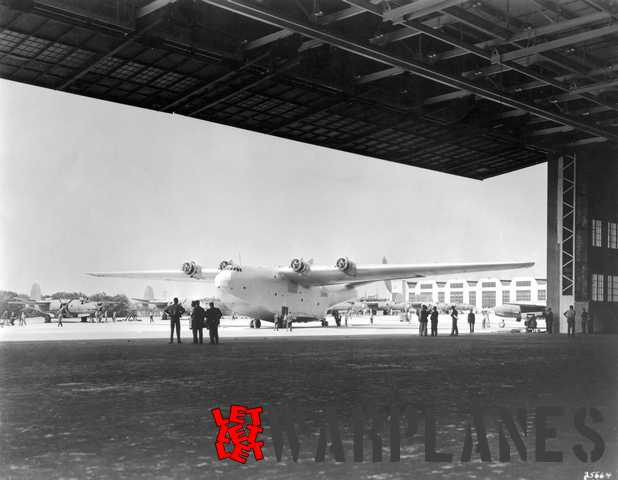
Changing roles….
The U.S. Navy had by that time already a four-engine long range patrol bomber in service: the Consoldated-Vultee PB2Y Conorado and although this flying boat was considerably smaller and lighter than the Mars, there was no need any longer for an ever bigger patrol bomber.
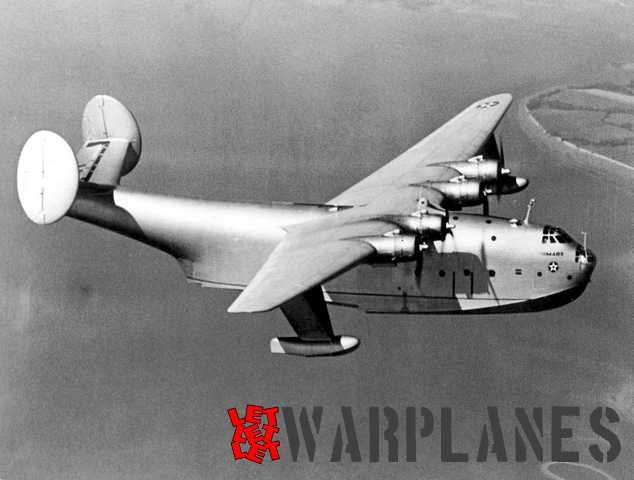
As a consequence, the role of the Mars was changed from patrol bomber to transport flying boat. Martin received the order to remove all military equipment, including the gun positions and to make the fuselage interior suitable for the transport of military equipment and soldiers under the changed type designation XPB2M-1R. Most visible change was a new rounded nose. The rebuild XPB2M-1R was ready on 27 November 1943. It went into service at a newly formed Air Transport Squadron, no. VR-8, based at NavalAirStationPatuxentRiver. Here, the future crew members were trained and later the XPB2M-1R would enter into a regular air service between PatuxentRiver and Naval Air Station Bermuda. However, it started its transport career with an impressive non-stop of more than 7000 km flight from PatuxentRiver to Natal, Brazil with a total flight time of 28 hours and 25 minutes.
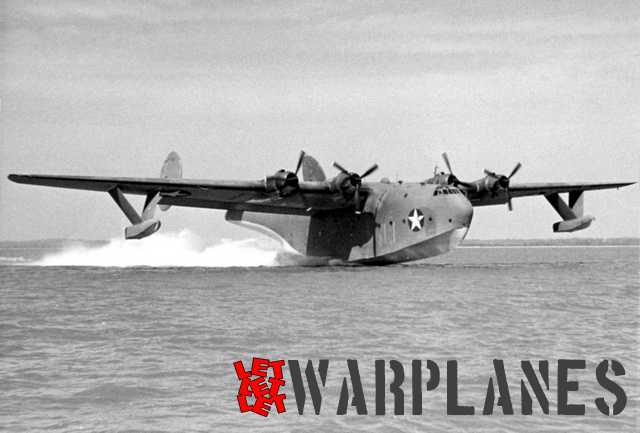
In January 1944 the ‘Old Lady’ , as it was affectionately named by its crew, joined the Pacific Naval Air Transport Service (NATS) squadron VR-2 at NAS Alameda in California. Here it made a total of 78 round trips between San FranciscoBay and Honolulu, Hawaii. During these trips it could carry 150 passengers and in total some 3 million pounds (1,360,800 kg) of military supplies were flown. This included a flight of 120 cargo-tons of badly needed blood to Iwo Jima. The XPB2M-1R was retired in March 1945. It was beached at Alameda and later scrapped.
Into production
The U.S. Navy was so impressed by the performances of the XPB2M-1R that it placed an order for 20 production models. They carried the designation JRM-1. The JRM-1 featured a single large vertical stabilzer instead of the twin fins of the XPM2M-1. Other changes included more powelful R-3350-8 engines of 2400 hp driving four-bladed propellers and an aft extension of the fuselage step for better handling in the water. The twenty new flying boats received the Bureau of Aeronautics registry numbers 76819 up to/including76838. However, the end of the war meant that the order of 20 machines was finally reduced to 6. The first JRM-1 carrying the name ‘Hawaii Mars’ and BuNo. 76819 made its first flight on 10 July 1945. This flying boat crashed already the next month when it lost the leading edge of the vertical stabilizer. It sank after a bad landing in the Chesapeake Bay and although the plane was recovered from the water it was not repaired but scrapped. JRM-1 BuNo. 76823 replaced the ‘Hawaii Mars’ carrying the same name!
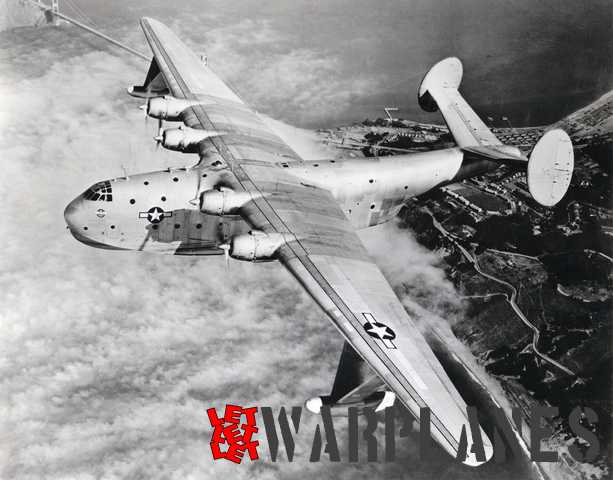
The next four with BuNos. 76820 to 76823 were delivered to VR-2 at NAS Alameda with the last one; no. 76823 ‘Hawaii Mars’, being delivered in May 1946.
The last production Mars, no. 75824 ‘Caroline Mars’, was delivered to VR-2 Alameda in July 1947. It differed from the previous JRM-1 versions with the installation of four 3000 hp Pratt & Whitney R4360-4T Wasp Major engines.. Designated as JRM-2, its gross weight was increased by 9072 kg (20,000 lbs) thanks to the additional power.
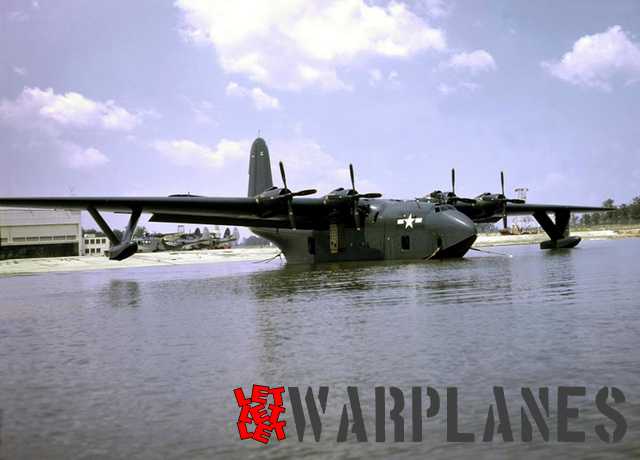
The four JRM-1’s were later fitted with 2,400 hp Wright R3350-24WA engines driving 16 ft, 8 in Curtiss-Electric propellers, of which the inboard two engines were fitted with reversible-pitch devices. New type designation for this final version was JRM-3. Eventuslly, also the single JRM-2 was also brought to JRM-3 standard when new R3350-24WA’s were fitted.
BuNo. 768212 ‘Marshall Mars’ was lost on 5 May 1950 near Honolulu when an engine caught fire shortly after take off. The plane could be safely landed, but when the fire spread to the wing fuel tanks the crew had to abandon the plane in a rescue boat and the plane was totally destroyed by the fire and finally sunk.
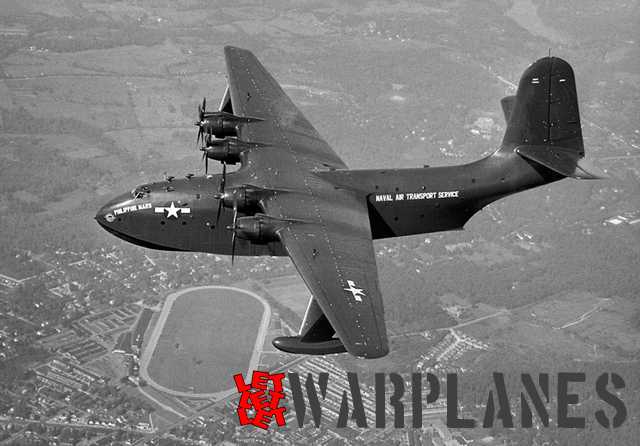
The remaining four Mars flying boats were extensively used by VR-2 for transport of both persons and material. Main routes used were in the pacific area. ‘Marshall Mars’ once started with the very respectable number of 301 passengers (plus 7 crew members). It was a passenger load-carrying record flight from NAS Alameda to NASNorthIsland, made on 19 May 1949. We can truly state the Mars was the Jumbo of its time!
The operational life of the Mars flying boats ended when they were withdrawn from service in 1956 with a total flying time of 87,000 hours. They were beached and stored on land at NAS Alameda with the intention to sell them in 1959 for scrap. However, things went completely different as we shall see!!
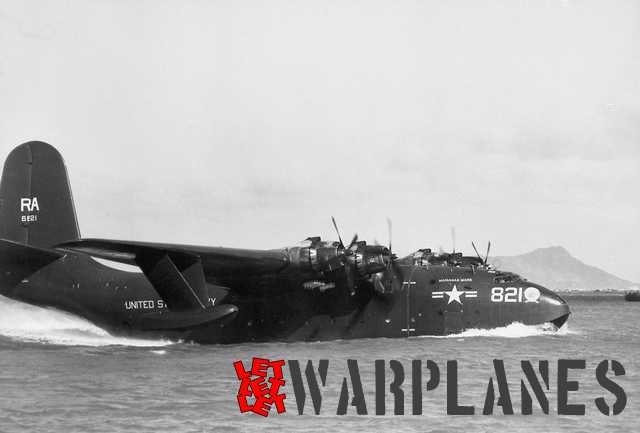
The lettering ‘RA’ was the tailcode of VR-2.
Production:
BuNo. 1520 XPB2M-1 (later converted into XPB2M-1R) c/n 877
BuNo. 76819 JRM-1 ‘Hawaii Mars’ (first one) c/n 9263
BuNo. 76820 JRM-1 ‘Philippine Mars’ CF-LYK c/n 9264
BuNo. 76821 JRM-1 ‘Marianas Mars’ CF-LYJ c/n 9265
BuNo. 76822 JRM-1 ‘Marshall Mars’ c/n 9266
BuNo. 76823 JRM-1 ‘Hawaii Mars’ (second one) CF-LYL c/n 9267
BuNo. 75824 JRM-2 ‘Caroline Mars’ CF-LYM c/n 9268
BuNo. 75825 uncompleted nose section for 2nd JRM-2 c/n 9269
(taken over by FIFT and later by Coulson as spare section)
BuNos. 75826 to 75838 were assigned, but later cancelled before construction was started.
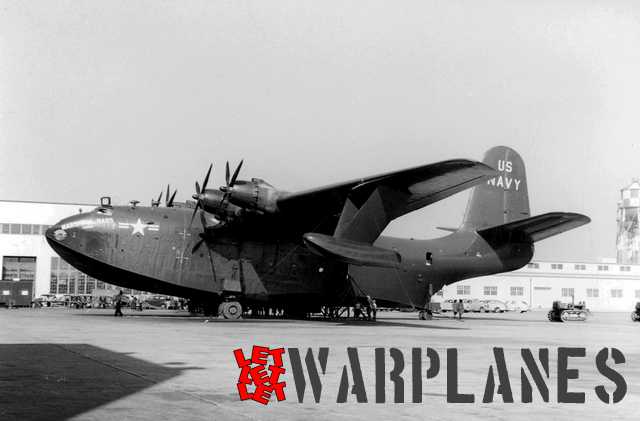
A new life as a fire bomber!!
Although the initial plan was to sell the four remaining Mars flying boats as scrap, they were eventually saved from being cut into small pieces.
The four machines and a large supply of spare parts were in 1959 acquired by the Canadian’Forest Industries Flying Tankers’, abbreviated as FIFT. The flying boats were converted into water bombers. By using retractable water pick-up scoops, the plane could take 30 tons of water on board in just 22 seconds. The conversion was completed in 1960 and soon groups of specialized pilots were being trained in their water-bombing role. All four planes were based at SproatLake, Vancouver Island. In 1960 the ‘Marianas Mars’ with civil registration CF-LYJ was the first one ready for water bombing. Unfortunately it crashed into Mount Moriarty near Nanaimo, Vancouver Island, on 23 June 1961, when the water drop mechanism failed, leaving the aircraft unable to climb quickly enough to clear a mountain. All five men on board were tragically killed. The lesson learned from this crash was evident; all three remaing flying boats got an emergency water dump installation. Also ‘Caroline Mars’ CF-LYM was not very lucky at FIFT. In October 1962 it was destroyed when hit by the typhoon Frieda. The two remaining aircraft, the ‘Philippine Mars’ CF-LYK and ‘Hawaii Mars’ CF-LYL continued to serve as water bombers. In November 2006 the both aircraft were offered for sale. Initially it seemed the two big boats would end their days in an aviation museum, but finally they were in April 2007 purchased by Coulson Forest Products and they served on with their duty as fire bombers.
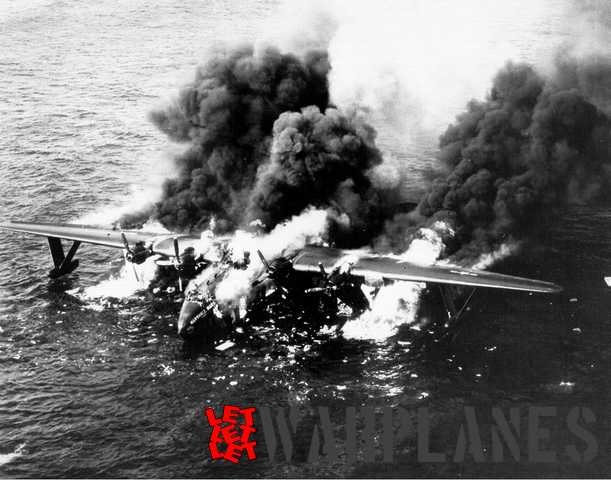
‘Philippine Mars’ was finally retired from the Coulson fleet in August 2012. It was flown to the National Naval Aviation Museum at Naval Air Station Pensacola, Florida to become a static exhibit. It will be exhibited in its original U.S. Navy colors.
The sole ‘Hawaii Mars’ continued its fire-bombing missions until the state of British Colombia decided in the summer of 2013 not to continue their contact with Coulson, again because of the ever rising costs. The ‘Hawaii Mars’ was finally beached at the Coulson premises and we can only hope it will be preserved for future exhibition in an aviation museum.
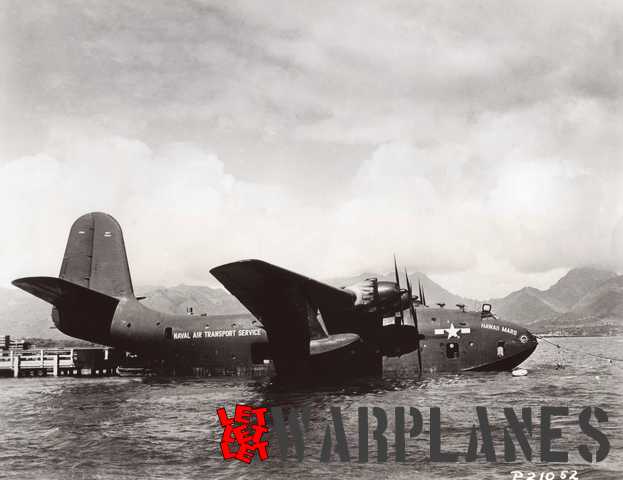
Technical data (JRM-1)
Powerplant: 4 × Wright R-3350-24WA Duplex Cyclone 18-cylinder radial engines of 2,500 hp (1,900 kW) each
Dimensions:
– Length: 35.74 m (117 ft3 in)
– Wingspan: 60.96 m (200 ft0 in)
– Height: 11.71 m (38 ft5 in)
– Wing area: 342.4 m²(3,686 ft²)
Weights:
– Empty: 34,279 kg (75,573 lb)
– Loaded: 40,820 kg (90,000 lb)
-Maximum: 74,800 kg (165,000 lb)
Performances:
-Max. speed: 356 km/h (221 mph, 192 knots); cruise 305 km/h (190 mph, 165 knots)
-Range: 8,000 km (5,000 mi, 4,300 nautical miles)
-Service ceiling: 4,450 m (14,600 ft)
Crew: four (with accommodations for a second relief crew)
Payload: 15,000 kg (32,000 lb) of cargo, including up to seven jeeps
Capacity: 133 troops, or 84 litter patients and 25 attendants
Data from Jane’s Fighting Aircraft of World War II
Camouflage and markings:
During its test flight period as XPB2M-1 the Mars had an aluminium colored fuselage and under wing. Upper wing and leading edge were yellow. During this phase the name ‘MARS’ was painted under the cockpit preceded by a wing symbol. Old-style national insignia were used with the red dot in the white star.
After the rebuild into the -1R version the plane was sprayed in the standard U.S. Navy scheme matt blue-grey. Underside of the fuselage had a off-white anti-fouling paint. National insignia was without the red dot. Later on, the white side stripes with blue edge were added.
The XPB2M-1R ended its career in an all-over aluminium scheme with the NATS insignia on the nose.
The JRM’s were in use after the war in an all-over non-specular dark sea-blue scheme with the individual names showing in white lettering under the cockpit. Only ‘Marianas Mars’ was different with its name in smaller lettering after the cockpit section just above the national insignia. Initially late WW-II style national insignia were used, but later the red stripes were added in the side stripes. Initially, the registration nos. were carried on the tail, but later the last three digits of the BuNos. also appeared on the nose with the white text ‘NAVAL AIR TRANSPORT SERVIVCE’ on the sides of the rear fuselage.
When in service as a water bomber at FIFT and later at Coulson the Mars was sprayed in a very attractive bright red/white highly-visible color scheme.
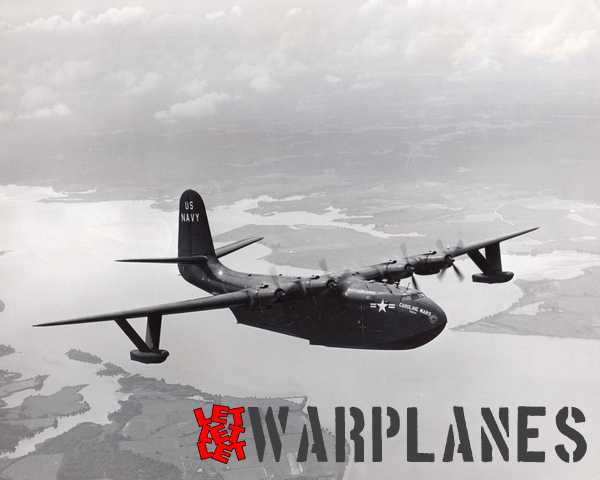
Tips for the model builder:
Unfortunately there never was an injection-moulded model kit of the Martin Mars. When operational it was apparently not interesting enough for companies like Revell and Airfix!
In the past, vacform kits have been released by Combat Models (1/72 scale) and Air Craft Models (1/144 scale); but most likely these are not any longer available.
Still available at Czech Master Resin (CMR) are three kits for the ‘Philippine Mars’ and the ‘Hawaii Mars’ water bombers and the ‘Marshall Mars’ in U.S. Navy colors as resin model at 1/144 scale.
See: http://www.cmrmodels.co.uk/page/1-144scale_aircraft.html for more details.
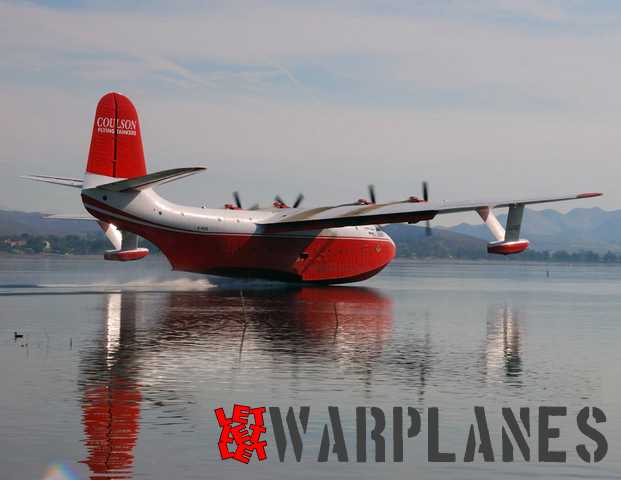
References:
-Steve Ginter, Martin Mars XPB2M-1R & JRM flying boats, Naval Fighters No. 27
-Bill Gunston, The mighty Mars, Aeroplane Monthly, April 1976 p.172-176
-http://www.oldwings.nl/content/mars/mars_a.htm
Nico Braas
This is an abridged version of a larger text for future publication. Special thanks to Cdr. Jim Sutton for his great help in preparation of this article.







Very good site. Interesting, In December 1984 I was on a Marshall Mars flight from NAS San Diego To NAS Alameda, the beginning of my trip to Kwajalein in the Marshalls. Bob E
try December 1948